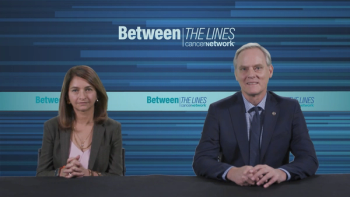
Treatment Options and Patient Counseling at Disease Progression in IDH-Mutant Gliomas
Panelists discuss how to manage slow FLAIR progression by initiating IDH inhibitor therapy, emphasizing the importance of setting patient expectations about tumor volume reduction and addressing special considerations for patients of childbearing age.
Episodes in this series

Content above is prompted by the following:
When patients develop progressive FLAIR signal abnormalities indicating disease progression, treatment decisions depend on prior therapy history and the extent of progression. For treatment-naive patients showing progression, initiating IDH inhibitor therapy is the preferred approach. However, for patients already on IDH inhibitors who develop progression, neurosurgical re-resection becomes the preferred next step, particularly if several years have passed since initial surgery. This surgical approach often provides updated pathological information and may reveal progression to grade 3 diseases.
Following surgical intervention for progressive disease, patients often require conventional treatments including radiation therapy and chemotherapy. The timing of this transition typically coincides with pathological evidence of grade progression, necessitating discussions about concurrent chemoradiation or, in the case of oligodendrogliomas, radiation with PCV chemotherapy. This represents a critical juncture where the treatment paradigm shifts from targeted therapy to more traditional cytotoxic approaches, requiring careful patient counseling about increased toxicity profiles.
IDH inhibitor therapy generally has minimal impact on patients' daily lives, with the notable exception of reproductive considerations. The FDA guidelines explicitly prohibit IDH inhibitor use during pregnancy, creating complex decision-making scenarios for women of childbearing age. The timing of treatment initiation must consider family planning goals, fertility preservation options, and insurance coverage for reproductive services. These discussions require nuanced counseling that balances oncological priorities with personal life goals, particularly given the chronic nature of low-grade glioma management.
Newsletter
Stay up to date on recent advances in the multidisciplinary approach to cancer.
















































































